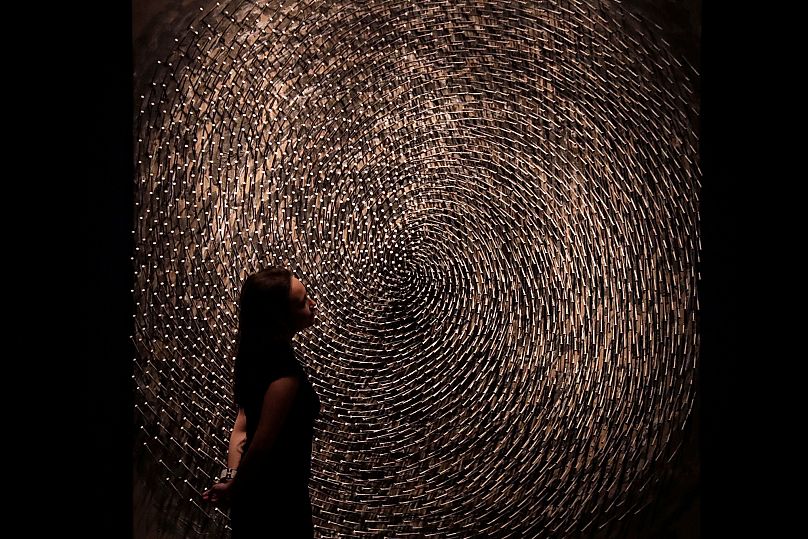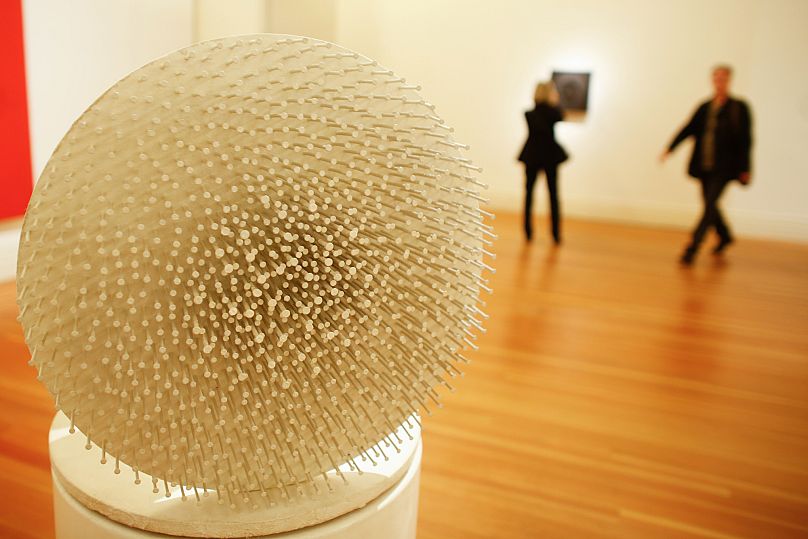Günther Uecker, one of the most iconic and influential figures in post-war German art, has died at the age of 95.
He was known around the world for his hypnotic nail reliefs – extraordinary textured surfaces created by hammering thousands of carpenter’s nails into everyday objects like chairs, pianos, tree trunks, sewing machines, and canvases.
His family confirmed he died at the university hospital in his hometown of Düsseldorf in western Germany on Tuesday night. They did not give a cause of death.
Born in 1930 in the small Baltic village of Wendorf, the son of a farmer, Uecker rose to international fame from humble beginnings. After relocating to Düsseldorf in the 1950s, he studied and later taught at the city’s revered art academy. He soon became part of the ZERO group, a radical post-war collective focused on light, movement, and purity in art.
In 1956, inspired by Russian revolutionary poet Vladimir Mayakovsky’s belief that “poetry is made with a hammer,” Uecker began hammering nails into canvases, chairs, and spinning disks. His early kinetic pieces created clattering soundscapes and optical effects that blurred the line between painting, sculpture, and performance.
Uecker once rode a camel through the hallowed halls of the Düsseldorf Academy in a surreal 1978 art intervention, and in 1968, alongside fellow artist Gerhard Richter, famously “occupied” the Kunsthalle Baden-Baden, their protest culminating in a kiss in front of the press.
But beneath the playfulness ran a deep moral current. Uecker traveled the world with messages of peace, often creating works in countries under dictatorship or censorship. After the Chernobyl disaster, he painted using ash. He exhibited banners bearing messages of human rights in Beijing, and in a haunting series, painted words of violence –Verletzungswörter – in languages from around the globe.
Despite international fame (his works now command over €1 million and appear at top galleries and fairs), Uecker retained an anti-establishment spirit. “Don’t join the establishment,” he told Apollo magazine in a late interview.
In recent years, renewed global interest in the ZERO group, including a major retrospective at the Guggenheim Museum in 2014, brought his work to new audiences.







